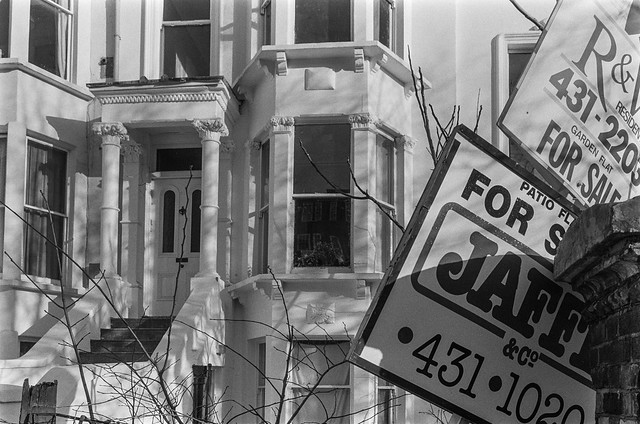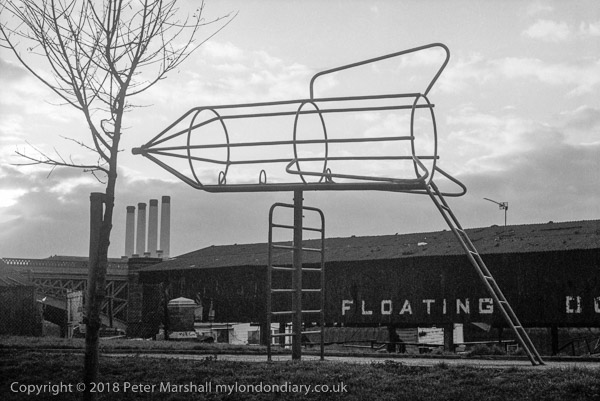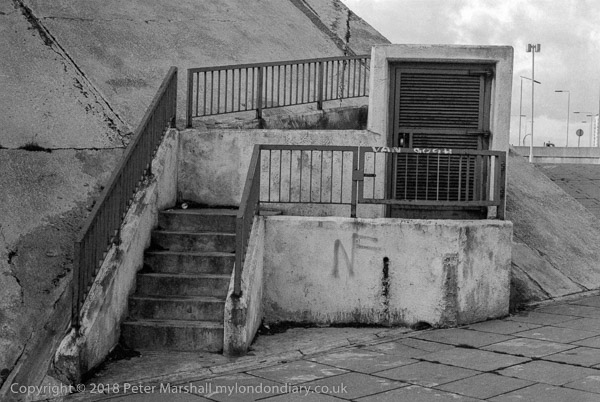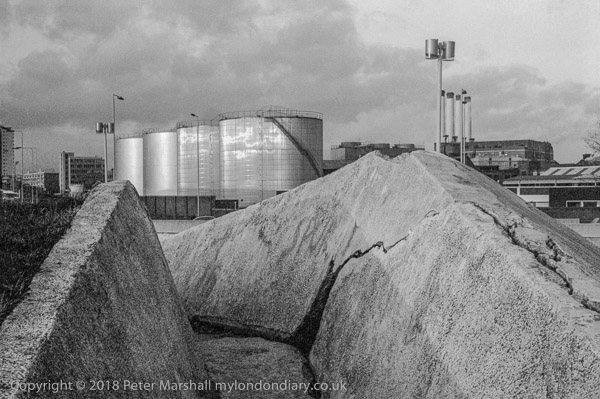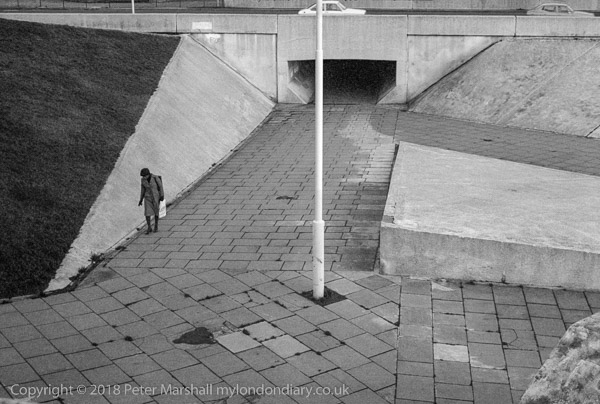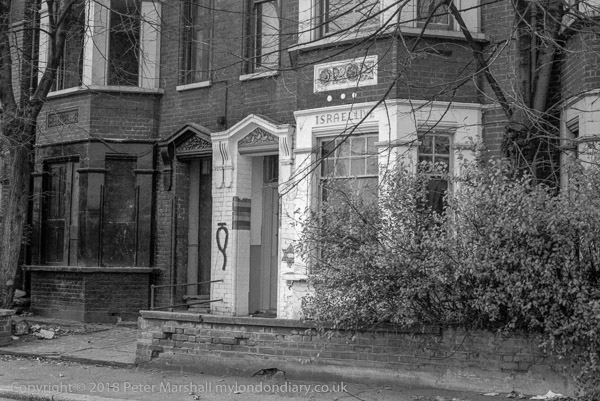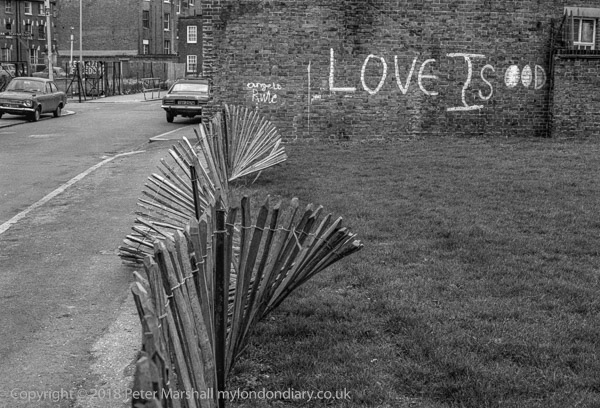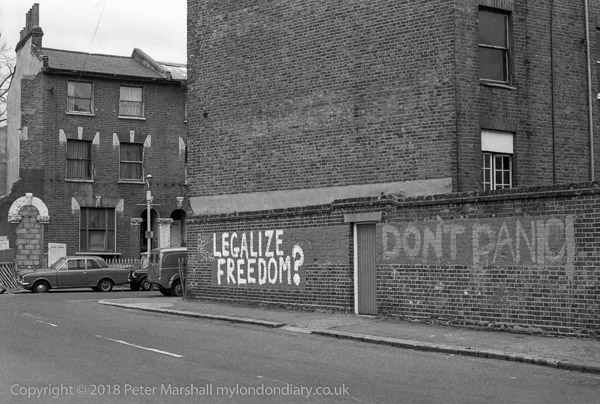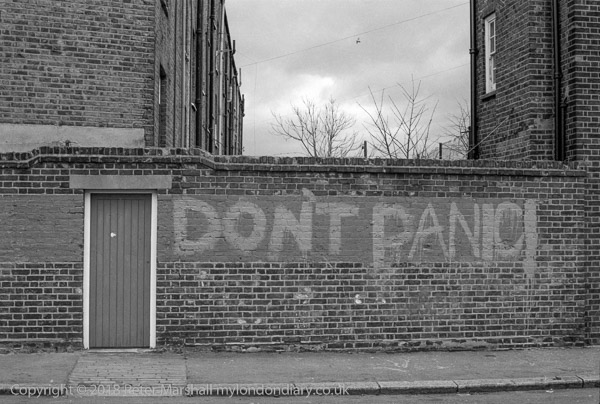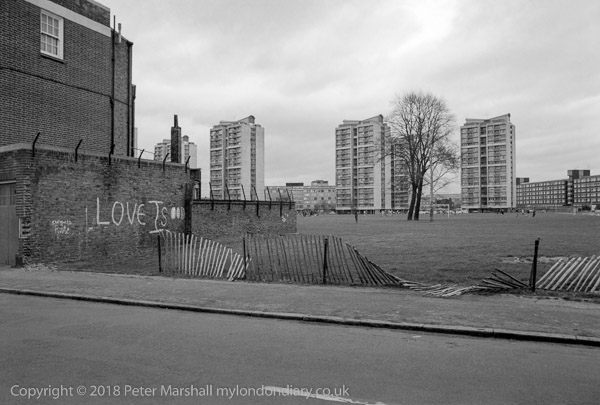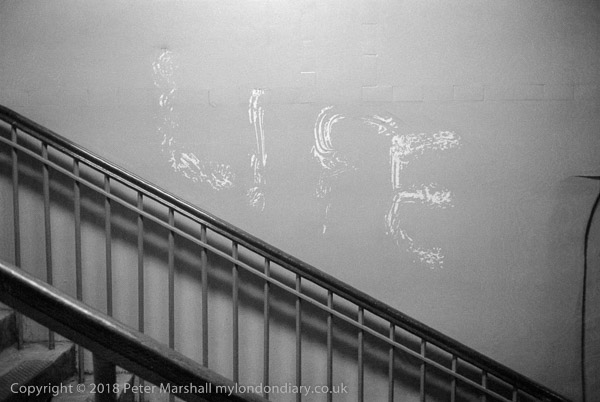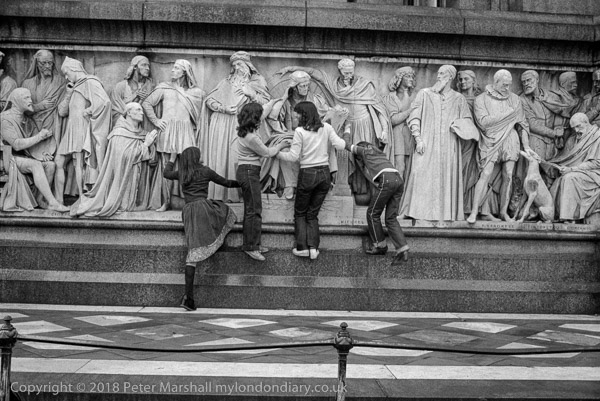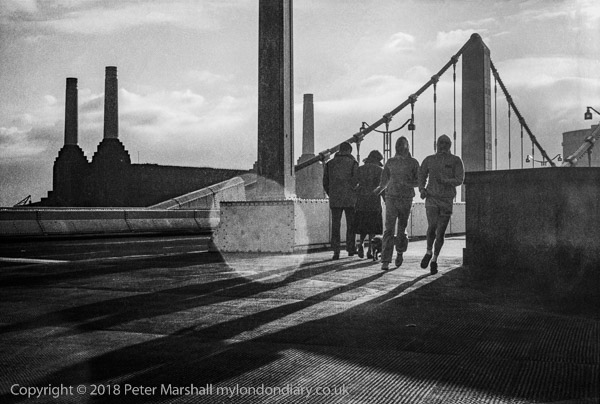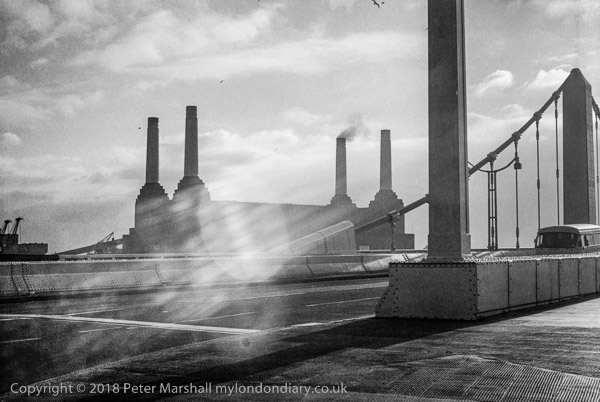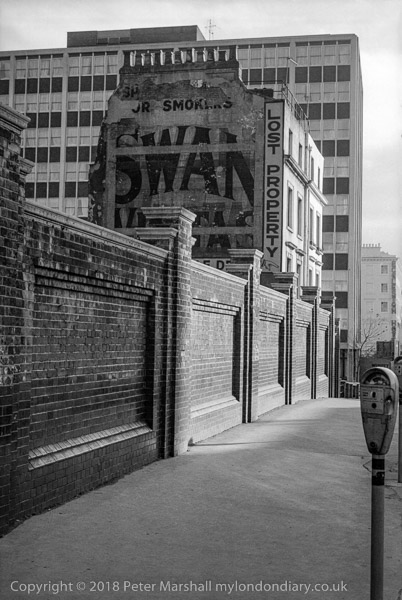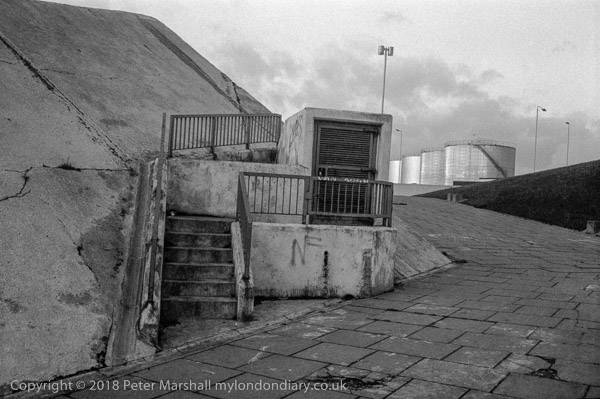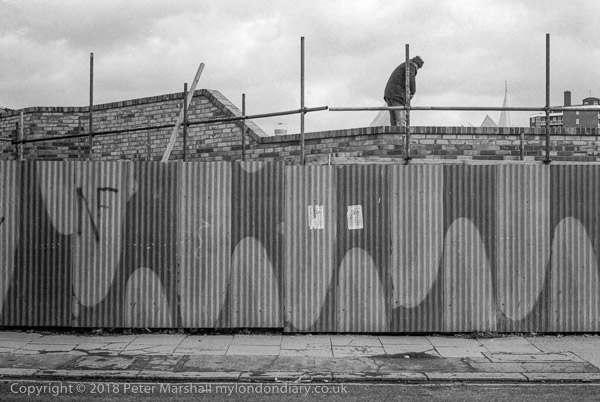The view from the bridge on Bishop’s Bridge Road is now rather different with the building over the canal having been replaced by a footbridge and an new entrance to Paddington station now obscuring the front of the station. You can still see the GWR Hotel and the canal, but the empty towpath has been much tidied and is now often thronged by people.
Paddington Basin and the area around the canal leading to it has been fairly dramatically redeveloped with tall blocks and leisure activities. There were few boats moving back when I took this picture and I think the rescue one in this picture was the only one I saw, though there may have been a few kayaks. Now the canal is rather busier, with small electric boats a popular but not cheap hire.
The bridge I was standing on was replaced by a wider modern bridge in 2006; shortly before it had been discovered that Brunel’s original 1839 iron bridge was still in place hidden under the 1906 structure – though its cast iron beams were clearly visible below. It was Brunel’s first iron bridge and of important historical and engineering interest but English Heritage agreed not to list it as it would have considerably affected the replacement plans; instead it was carefully dismantled and put into store on the understading it would be rebuilt for use as a footbridge across the canal around a hundred yards to the north.
Although planning permission was granted for this it never happened and the parts remain in a rather messy heap at English Heritage’s store at Fort Cumberland in Portsmouth, probably because the developers of the area preferred a nice modern and probably much cheaper design. Other former canalside artifacts removed at the same time with similar promises appear to have simply been lost, but the bridge was perhaps too large for that to happen.
Bishop’s Bridge Road only got its name after the Second World War, before which it had been simply Bishop’s Road, developed around the time the railway was built in 1836, replacing an earlier footpath. The Bishop was rather earlier, the manor of Paddington being given to Nicholas Ridley, Bishop of London by Edward VI around 1550.
The Assembly of God Central Pentecostal Church on Harrow Road survived until 2015 on the edge of a huge area of high-rise development in North Paddington, but has now gone. It had moved to the ground floor of this building from the Edgware Road in 1946, and was relocated at a temporary site in Tresham Crescent in 2015 while Westminster Council built Dudley House, completed in November 2019. This provides 197 homes at ‘intermediate rent’ as well as new premises for the church, a secondary boy’s school and shops.
You can see the curiously ugly QEQM (Queen Elizabeth the Queen Mother) building of Paddington’s Queen Mary’s Hospital towering above these simple but rather elegant buildings on North Wharf Road. That is still there but these buildings are long gone, replaced by towering glass fronted structures which now line Paddington Basin.
The redevelopment of this area, part of ‘Paddington Waterside’ began in the late 1990s and is now more or less complete, filled with high rise buildings. You can now stroll along beside the canal on both banks, while back in 1987 access was very limited. But the whole atmosphere of the area has changed. Although open to the public I think most or all of the open space is privately owned and some photographers, myself included, have been stopped taking pictures by security officers around Paddington Basin.
Green Lane was named Warwick Rd on a plan made in 1827 and later became Warwick Avenue. There were some houses on it by 1840 and most of the rest were built shortly after, all rather grand and in an Italian style and covered in stucco. Many like this one which overlooks the canal basin at Little Venice are listed. The name ‘Warwick’ came from Jane Warwick of Warwick Hall, in Warwick-on-Eden in Cumbria, who in 1778 married the great-grandson of Sir John Frederick who had leased the land from the Bishop of London.
Just a few yards from the more industrial area around the canal at Paddington, this is at the southern edge of Maida Vale, an area which attracted many of the wealthier members of London’s Jewish population in the late nineteenth century.
In the twentieth century parts of Maida Vale became one of London’s more respectable red-light areas. Large houses which were too expensive went into multi-occupation, let out as single rooms, usually sharing kitchens and bathrooms, and often became very run-down. Disruption of families by war and high levels of unemployment forced some women onto the streets where they would walk along keys dangling from their hands and invite passing gentlemen to take tea with them, though tea was apparently seldom served. But more recently the area has gone up in the world considerably again, and semidetached houses in the area sell for £5m or more.
In 1805 Napoleon had defeated both Austrian and Russian armies at Austerlitz and forced Austria to sign a peace treaty and he had also made peace with Prussia. This left him free to try to conquer more of Italy and in particular the Kingdom of Naples, which despite a treaty of neutrality with France had allowed both Russian and British troops to land. Napoleon rapidly advanced and conquered much of that kingdom, with the King and government fleeing to Sicily along with the British troops. A British expeditionary force returned at the end of June to Calabria where there was an insurrection against the French occupation and on 4th July engaged with French forces at Maida.
The battle was was on a relatively small scale with around 5,000 troops on each side and only lasted a few hours before the French who had suffered heavy losses during a cavalry charge against superior British guns and muskets were forces to retreat in considerable disarray. The British commander, John Stuart, was given the title Count of Maida by the Italians and a pension of £1000 a year by the UK parliament as well as being made a Knight of the Bath.
The victory on land against Napoleon’s forces who had been so successful elsewhere gave Britain a much-needed boost in morale, and gave both Maida Vale and Maida Hill their names.
There is now a pub in Shirland Rd named for Stuart, The Hero of Maida, but it was not built until 1878 and was then The Shirland Hotel, later becoming Idlewild and in 2014 the Truscott Arms. Opened under new owners in 2018 it was re-named ‘The Hero of Maida’.
You can see more of my pictures of London in 1987 on Flickr.
All photographs on this and my other sites, unless otherwise stated, are taken by and copyright of Peter Marshall, and are available for reproduction or can be bought as prints.














